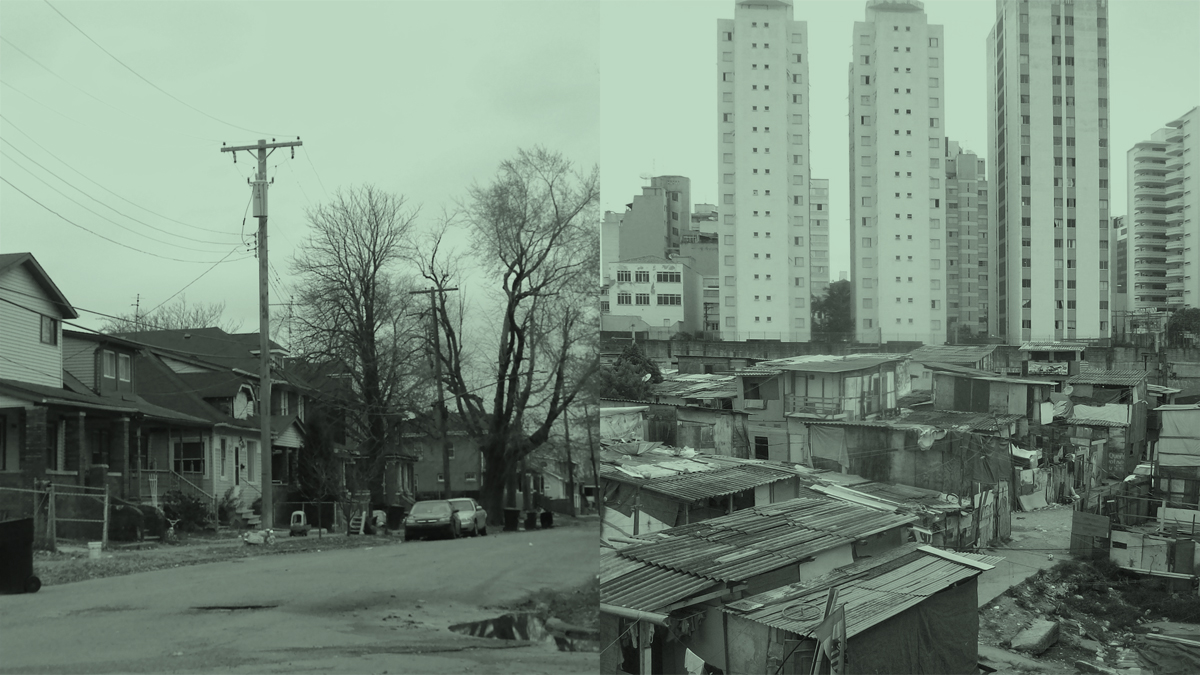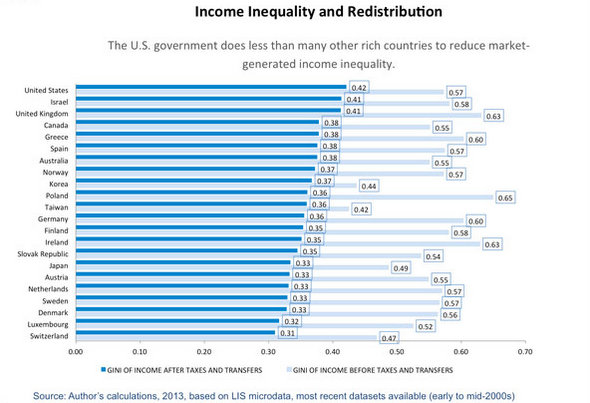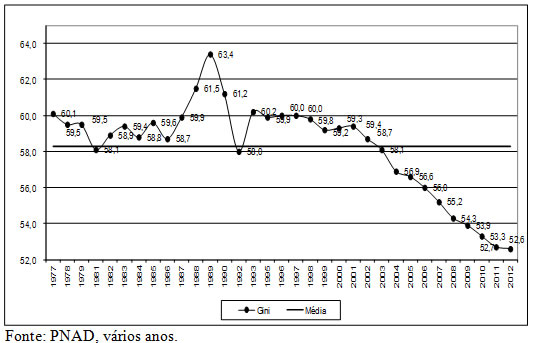The US will become as unequal as Brasil. And that bothers both societies.
As we watched President Obama’s second inauguration 2013 it was hard not to notice that, once again, Latin America was completely absent from any major initiative for the next four years. Even the immigration reform that came as a result of growing Hispanic political power seems completely disconnected from US engagements south of the border. In the end President Obama was obliged to use his executive powers to push through a much watered down package that pleased no one.
However, there is one inconvenient convergence looming in the horizon. Before the end of Obama’s second term the US will possibly be as unequal as Brasil, i.e, both nations will have the same Gini Coefficient. This will not make Latin America in general and Brasil in particular any more relevant in the US political conversation but might signify a turning point in the way that inequality is discussed both in the United States and Brasil..
First lets look at the numbers: The Gini coefficient is the most used measurement of income inequality but it shows quite some difference when calculated before of after taxes for instance. Nevertheless, the US Census Bureau has determined the nation’s Gini to be 0.477 in 2011, a significant change from four decades ago when it was around 0.36. The OECD estimate is even worse at 0.486 pre-taxes in 2010. The Census Bureau numbers show inequality growing at a pace of 0.004 points per year in the US (in average this past decade) and twice as fast since 2008. With no major change in the horizon – ensured by the divided and polarized congress – the US Gini numbers might be right below 0.50 before the next presidential elections.
Janet Gornick, CUNY research centre on international inequality
Meanwhile in Brasil, the second largest economy of the hemisphere, inequality is diminishing at a steady pace. After being an outrageous 0.6 in the mid 1990s the Brazilian Gini retreated a bit to 0.585 in 2002 and after that has gone down at a rhythm of 0.006 per year, reaching the record low of 0.511 in 2011 and therefore expected to be below the 0.5 line sometime around 2015 at the latest. It should be noted here that from the year 2011 there appears to be a slowing in the drop of Brasil’s Gini coefficient, although one year is not a tread and it will be a number of years before we see if that is the case. But regardless Brasil currently has the lowest inequality since before the dictatorship.
Beyond the inevitable surprise of finding out that the US will soon be as unequal as Brasil, the consequences of such are already transforming both societies. In Brazil there is much to celebrate as economic growth and diminishing inequality come together for the first time in many generations. The Lula government bragged that forty million people were raised out of poverty in the last 10 years, a number corroborated by the Brazilian banks association reporting that they absorbed over 40 million new clients during the same time. That is one entire California or the sum of Texas and Florida becoming consumers in a single decade. But the same improvements that push Brazilian life expectancy to higher levels is also pushing fertility rates to alarmingly low levels. An older Brasil might very soon have the troubles of Italy or Japan. Income growth came tied with consumerism and two negative consequences that the US know very well: dangerous levels of debt and growing obesity. In addition, the Brazilian cities are chocking with traffic as a result of the US-inspired reliance on the automobile, a sign of status for this giant new middle-class. On yet another sad convergence the crime numbers that made Brazilian cities infamous in past decades are down on wealthier areas and steady or sometimes even worse in the impoverished periphery of every major city. The similarities with LA, NY and Chicago are not a coincidence. By the way, when calculated by metropolitan regions, the Gini Coefficient of those 3 cities are already at Brazilian levels, Washington DC already above.
In the US those sad numbers are slowly entering the broad political discussions – see Occupy and 99% movements plus articles by Nobel Prize laureates Joseph Stiglitz and Paul Krugman – but have not been, until very recently, major campaign topics. during the 2012 campaign Mitt Romney’s 47% comment might mark a change of paradigm but even then the discussion was never about an asymmetrical distribution of wealth being intrinsic to contemporary capitalism. If there is one thing that the Brazilian left and Brazilian in general should be proud of is the fact that inequality has been a major political discussion in that country since re-democratization in the mid 1980s. It is interesting to note that in 2014 inequality was not the main issue of the presidential campaign, perhaps signaling an exhaustion of the topic by the general public.
The US society will probably be quite disturbed (and correctly so) by becoming as unequal as Brasil, and this might trigger a national conversation about ways to address this issue. It will indeed be quite inconvenient when those Gini coefficient converge.
Even more intriguing is to perceive that Brazilians are also bothered by such convergence. The same left intelligentsia that brought inequality to the forefront in the 1990s and successfully reduced it in the 2000s have always portrayed the USA as the land of untamed capitalism and rampant consumerism. To see Brasil following on the same steps is quite uncomfortable.
In the 1960s Latin American scholars coined the “Dependency Theory” to explain the asymmetrical development of the region and the difficulty of breaking out of it at the dawn of what financial globalization. Fifty years later the Gini convergence will imply a paradigm shift that renders the old dependency theory quite useless. But there is nothing to fill this void, no sign of a “Convergence Theory” that might help us understand what the present means and what the future entails in both countries.



